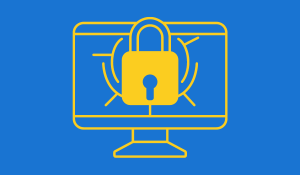When employees are frustrated with technology, everything slows down. Work grinds to a halt, customers wait longer, and managers scramble to put out fires. In many cases, the problem isn’t the employees themselves, it’s the IT support service desk behind them. A service desk should be more than a phone number you call when a printer jams or when a password refuses to work. It should be the foundation of your organization’s ability to function smoothly, protect data, and deliver customer experiences that inspire loyalty. If your IT support service desk isn’t built to anticipate issues, resolve them quickly, and keep your team confident in the technology they use daily, then it might be time to reconsider the team or provider you’re working with. This article unpacks what a service desk really does, why it matters, the most common failures businesses encounter, and how to identify the eight key components that separate an average desk from a top-performing one. By the end, you’ll have a clear picture of whether your current IT team is helping your business grow or quietly holding it back.
What Does an IT Support Service Desk Really Do for a Business, and Why Is It More Than Just Password Resets and Ticket Numbers?
At its core, an IT support service desk is the front line of defense against technical interruptions. It’s the first place employees reach out to when something goes wrong, whether that’s a locked account, a malfunctioning laptop, or a full-scale network outage. But reducing the definition of a service desk to “problem solver” misses the bigger picture. A strong IT support service desk should function as the heartbeat of your IT ecosystem: monitoring systems, anticipating recurring issues, and stepping in with solutions that feel personal and helpful. Rather than simply reacting to technical hiccups, the desk should actively look for ways to prevent them. Imagine an employee calling in stressed because their video conferencing platform keeps dropping during client calls. A weak desk will reset the software and send them on their way, leaving the root problem unresolved. A strong desk will not only troubleshoot but investigate whether the issue stems from bandwidth limitations, outdated drivers, or a network-wide issue that could affect multiple employees. In this sense, the IT support service desk isn’t just solving problems, it’s enabling productivity, protecting reputation, and keeping the business moving.
The Common Challenges That Reveal When an IT Support Service Desk Isn’t Working and How These Frustrations Cost Businesses More Than Just Time
Many organizations already suspect their IT support service desk isn’t working as well as it should. The warning signs are there: repeated calls about the same issue, long wait times, unhelpful answers, and an overall sense of “just deal with it” among employees. The challenges often boil down to three main problems: rapidly changing technology, recurring unresolved issues, and understaffing. Technology evolves daily: software updates, new cybersecurity threats, and emerging platforms all demand constant attention. If your IT team can’t keep up, the business pays the price with downtime and vulnerability. Recurring issues, like constant Wi-Fi drops or repeated login failures, frustrate employees and suggest that root causes aren’t being addressed. Finally, understaffing means calls go unanswered, tickets pile up, and employees feel like they’re yelling into a void. This cocktail of inefficiency not only costs time but can directly impact revenue when customers feel the ripple effects of poor technology experiences. That’s why evaluating whether your IT support service desk is equipped to meet the demands of your business is critical before these challenges snowball into crises.

Eight Key Components Every Successful IT Support Service Desk Must Have to Deliver Real Value Instead of More Problems
If you’re questioning the performance of your IT support service desk, you’re not alone. Many organizations find themselves frustrated by lackluster service but unsure how to pinpoint the specific shortcomings. To make it simple, here are the eight components that define a successful desk:
- Performance Assessment – Measure downtime, ticket volume, first-call resolution rates, and cost per ticket. If the numbers don’t look good, neither does the desk.
- Customer-Centric Focus – Employees should feel listened to, understood, and respected, not like burdens interrupting IT’s day.
- Streamlined Communication Channels – Multiple points of access (phone, email, chat, internal ticketing) make it easier for users to connect.
- Knowledge Base Creation – A library of solutions empowers employees to self-serve for small problems and speeds onboarding for new IT staff.
- Proactive Issue Resolution – Instead of waiting for problems, the desk should anticipate them with updates, monitoring, and training.
- Continuous Education – Technology changes constantly. A learning IT team is a strong IT team.
- Responsiveness – Five minutes or less to respond, one hour to resolve. Anything longer slows the business.
- Scalability – As the business grows, the service desk must scale resources, tools, and expertise accordingly.
By demanding these components, you shift the IT support service desk from a “break-fix” team into a trusted partner invested in the success of your business.
How to Measure If Your IT Support Service Desk Is Meeting Expectations and Why Key Metrics Tell a Bigger Story About Efficiency
Numbers don’t lie, and when it comes to your IT support service desk, the metrics are the clearest indicator of whether the team is keeping up or lagging behind. Start by calculating lost business hours during downtime. Even small interruptions add up, costing thousands of dollars in productivity. Next, look at the rate of change success, when your business rolls out new software, upgrades systems, or makes network adjustments, how smoothly does it go? A capable desk will minimize disruption and support employees through transitions. Another important measure is the first-call resolution rate. Are employees calling back multiple times for the same issue, or does the service desk get it right the first time? Pair this with ticket volume analysis, how many tickets are coming in, how quickly are they being resolved, and which ones are recurring? Finally, evaluate cost per ticket. If you’re paying premium prices for a desk that can’t keep up, it’s time to rethink. Tracking these metrics monthly allows you to spot trends before they turn into major issues, giving you the evidence needed to demand better service or seek new partners.
Why Customer-Centric IT Support Service Desks Create Happier Employees, Better Productivity, and a Healthier Business Culture
At the heart of a successful IT support service desk lies one word: people. Employees are not just “end users” but individuals trying to get their work done efficiently and without stress. A customer-centric desk prioritizes empathy, patience, and clear communication alongside technical expertise. When someone calls in frustrated about losing a file or being locked out of an account, the way the service desk handles that call matters just as much as the solution itself. A dismissive response breeds resentment and disengagement, while a supportive tone fosters trust and confidence. Training IT staff to embrace a service mindset is critical. This means understanding employees’ communication styles, anticipating frustrations, and delivering solutions that feel human, not transactional. A culture built around customer-centricity creates ripple effects across the organization, employees stay more engaged, customers notice smoother service, and leadership gains confidence that the IT foundation is strong. In short, a people-first IT support service desk turns technology from a headache into a competitive advantage.
Why Partnering With a Managed Service Provider Can Elevate Your IT Support Service Desk From Ordinary to Exceptional
Improving an internal IT team takes time, training, and resources, things many businesses struggle to spare. That’s where a managed service provider (MSP) comes in. By outsourcing your IT support service desk to a trusted MSP, you gain access to expert staff, advanced monitoring tools, and proven best practices without bearing the cost of hiring and training in-house. MSPs deliver value through proactive problem-solving, 24/7 monitoring, automation, and scalability tailored to your business needs. For small and mid-sized organizations especially, partnering with an MSP means you get enterprise-level IT support without enterprise-level expenses. At Endsight, for example, we’ve built our reputation on offering predictable costs, minimized downtime, and IT strategies that help businesses grow instead of constantly reacting to fires. When your service desk is powered by an MSP committed to continuous improvement, you’re no longer just “fixing problems”, you’re future-proofing your business.
Final Thoughts: Your IT Support Service Desk Should Empower Growth, Not Drain Resources—Is It Time for a Change?
Every business needs an IT support service desk, but not every desk delivers the value it should. When inefficiency, poor communication, and constant downtime dominate the picture, the cost isn’t just measured in tickets or dollars: it’s measured in lost momentum, frustrated employees, and disappointed customers. By focusing on the eight key components of a successful service desk, measuring performance through metrics, and prioritizing customer-centric culture, you set the stage for technology to become an asset instead of an obstacle. For many organizations, the fastest route to achieving this is partnering with a managed service provider like Endsight, where enterprise-level best practices meet small and mid-sized business needs. Your IT support service desk should give you confidence, not concern. The question is: is your current desk doing that for you or is it time for a new team that can?
Is your IT support service desk helping your business grow or quietly holding it back?
If you’re ready to evaluate whether your current team is delivering what you need, check out our guide on
How to Select an IT Vendor. It walks you through the process of choosing a partner that can keep your business running smoothly today and prepared for tomorrow.



/jclause.jpg)

